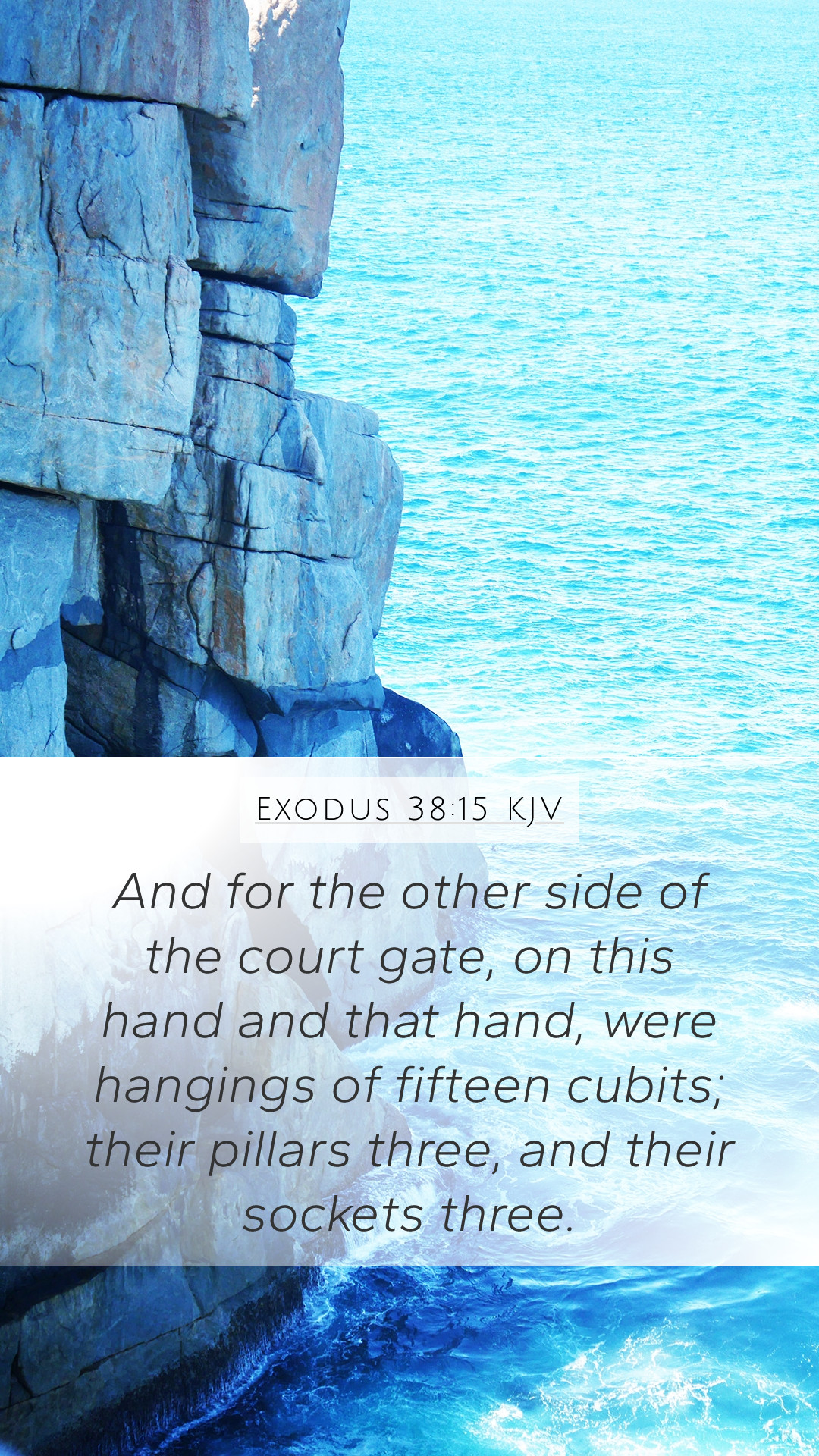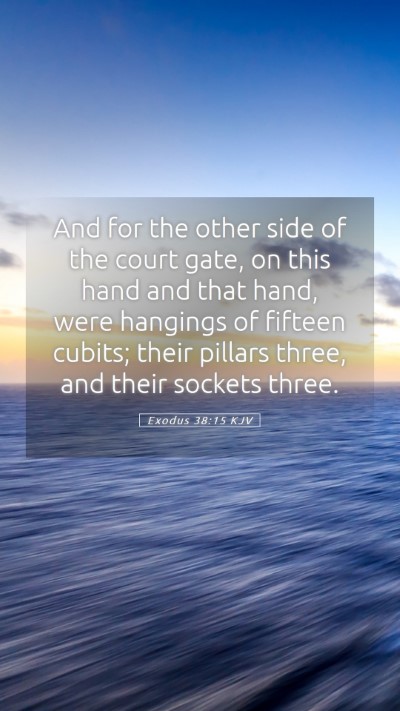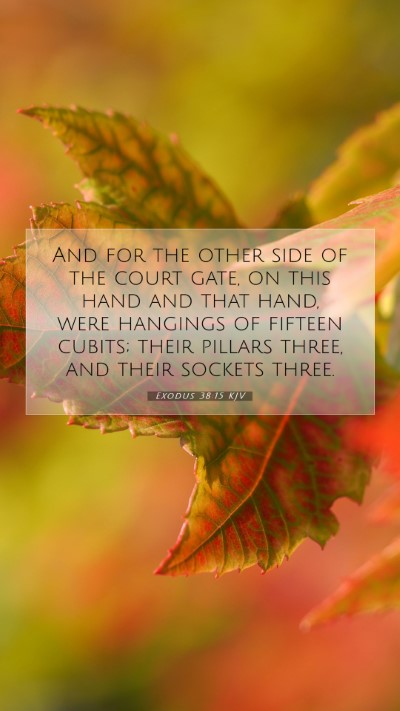Exodus 38:15 - Understanding Scripture
Exodus 38:15 states: "And on the other side, went the hangings of the court; but the pillars were thirty, and their sockets were of brass: the hangings of the one side of the gate were fifteen cubits; their pillars three, and their sockets of brass."
This verse describes the structure of the tabernacle and its courtyard, specifically focusing on the hangings and pillars used in the entrance area. To understand this passage fully, we can explore it through insights combined from various public domain commentaries, enriching our Bible verse explanations and offering clarity on the verse's significance.
Bible Verse Meanings and Interpretations
The meticulous details about the tabernacle's construction convey God's desire for order and beauty in worship. As Matthew Henry explains, the specifications reflect a higher truth about God's holiness and the careful preparation needed to approach Him. The use of brass for the sockets signifies strength and stability, suggesting that the worship of God should be grounded on strong principles.
Albert Barnes further emphasizes that God provided detailed instructions to facilitate an environment that kept the Israelites focused on His divine presence. The numerical values, such as the number of pillars and their spacing, further illustrate the care God took in establishing His sanctuary— symbolizing that everything in the spiritual realm operates under divine order.
Adam Clarke adds to this understanding by noting that the "hangings" and "pillars" serve as reminders of the separation between the sacred and the common. The visual structure of the courtyard represents a barrier that facilitates a sacred space for worship, hinting at the concept of approaching God with reverence and intention.
Historical Context and Symbolism
Understanding the historical context is crucial when interpreting this verse. The Israelites had just escaped slavery in Egypt, and the construction of the tabernacle was a significant step in establishing their identity as God's chosen people. The design was meant to reflect the holiness of God and His desire to dwell among them.
- Meaning of the Hangings: The hangings, made of fine linen, indicate purity and set the stage for worship. In ancient cultures, the quality of materials used in sacred spaces was vital for expressing the worthiness of the deity being worshipped.
- Significance of Brass: Brass, being a malleable yet strong metal, suggests durability in the context of worship—encouraging believers to build their faith on solid ground.
- Numerical Significance: The number thirty for pillars may represent completeness in God’s plans, indicating His establishment of a thorough structure for worship and community:
Application of the Verse in Daily Life
In today's context, Exodus 38:15 serves as a potent reminder of the sacredness of spaces designated for worship. As individuals and communities engage in Bible study groups or online Bible study, this verse encourages believers to create environments conducive to encountering God. Respecting the physical space where worship takes place mirrors the reverence with which individuals should approach God in their hearts.
Cross References
- Exodus 25:9: God's instructions for the tabernacle's construction.
- Hebrews 9:2: Discusses the earthly sanctuary in light of the tabernacle.
- 1 Peter 2:5: Believers are described as living stones, building a spiritual house.
Conclusion
The meaning of Bible verses like Exodus 38:15 provides profound insights into the nature of worship and God's desire for a relationship with His people. Through an understanding of Scripture, we can find ways to apply these ancient principles to modern worship experiences, always striving for an approach characterized by respect, order, and beauty.
As we explore Bible study insights and engage in Bible study lessons, may we reflect on the significance of our actions before God, honoring the spaces and practices that lead us into deeper communion with Him.


